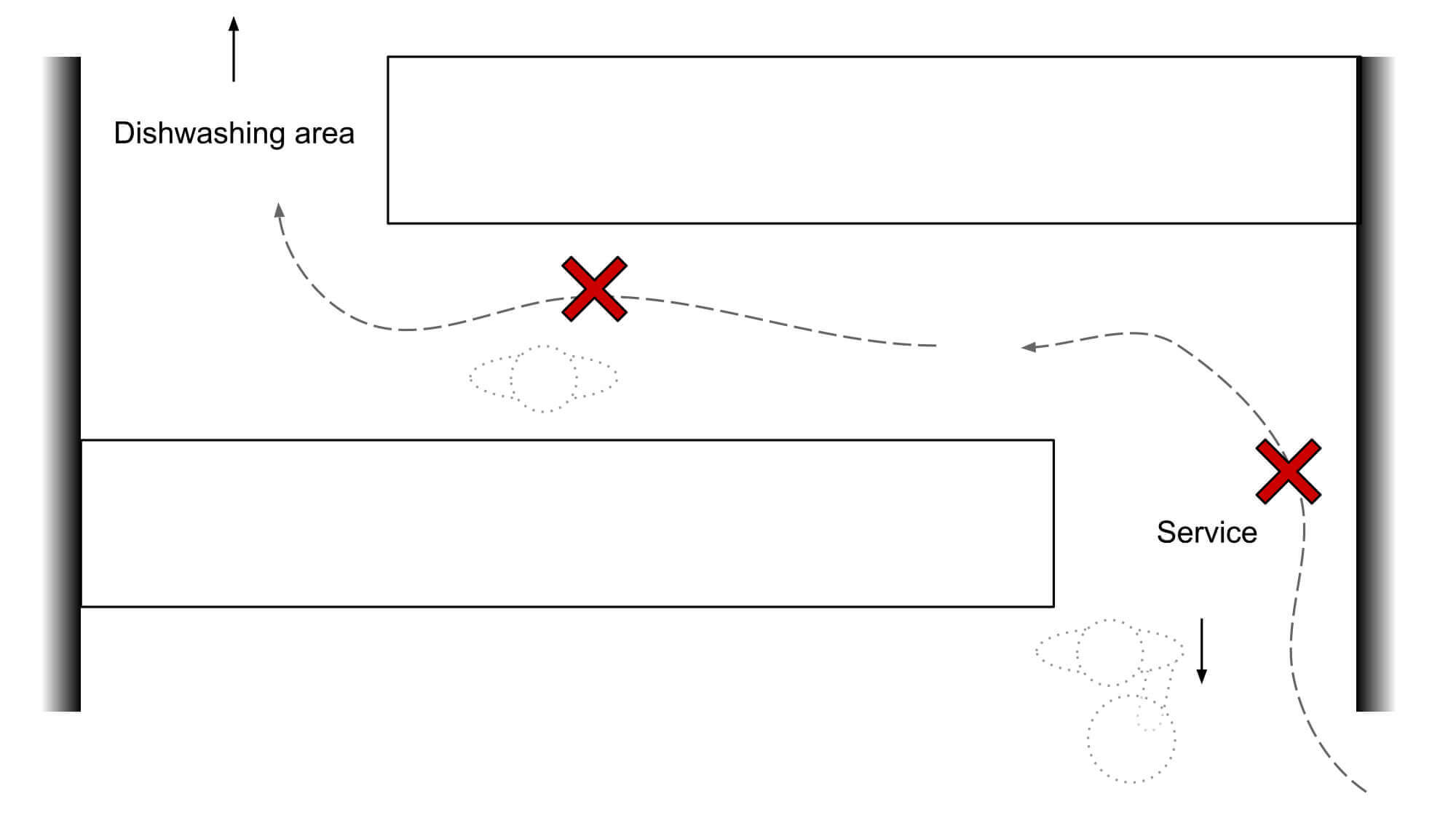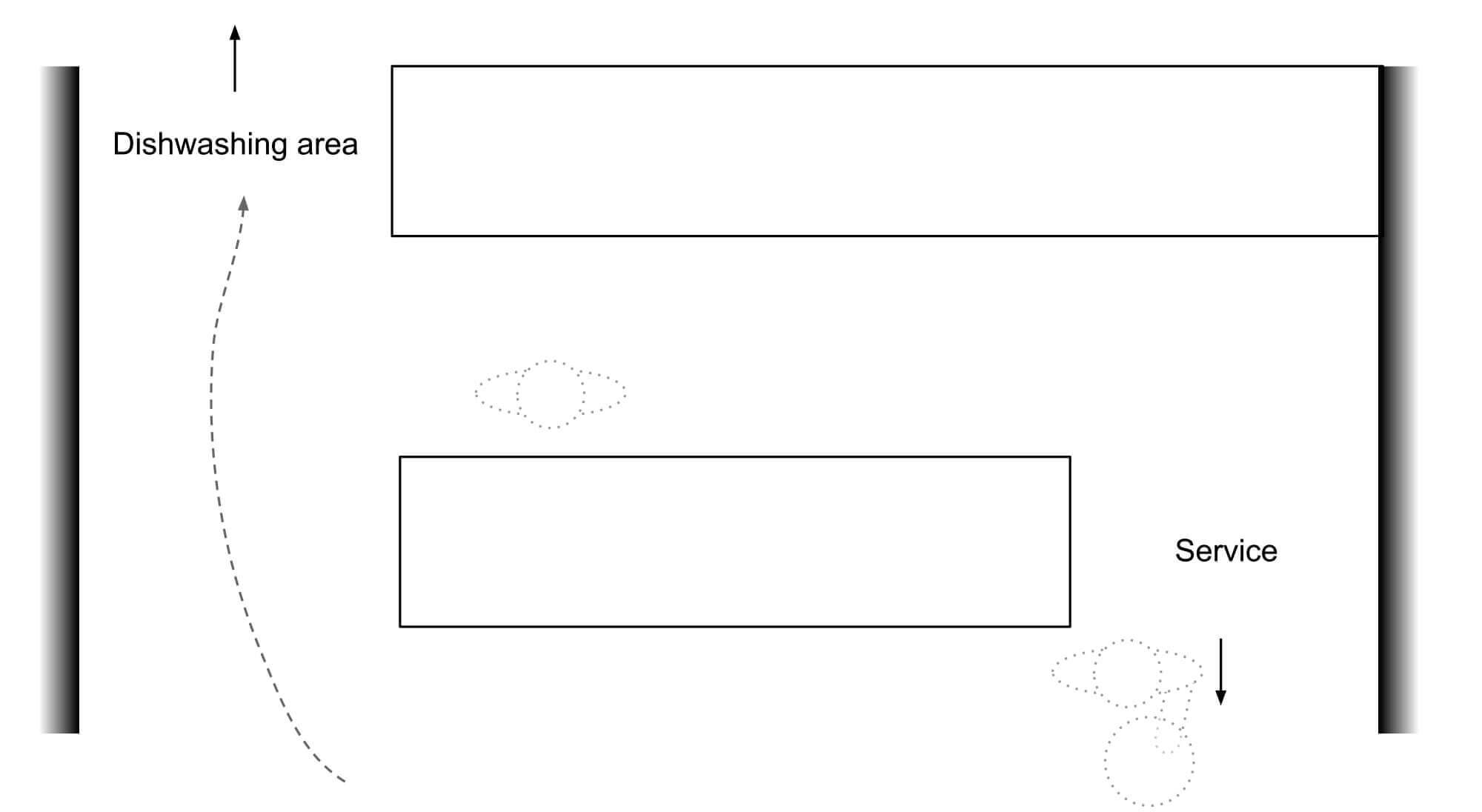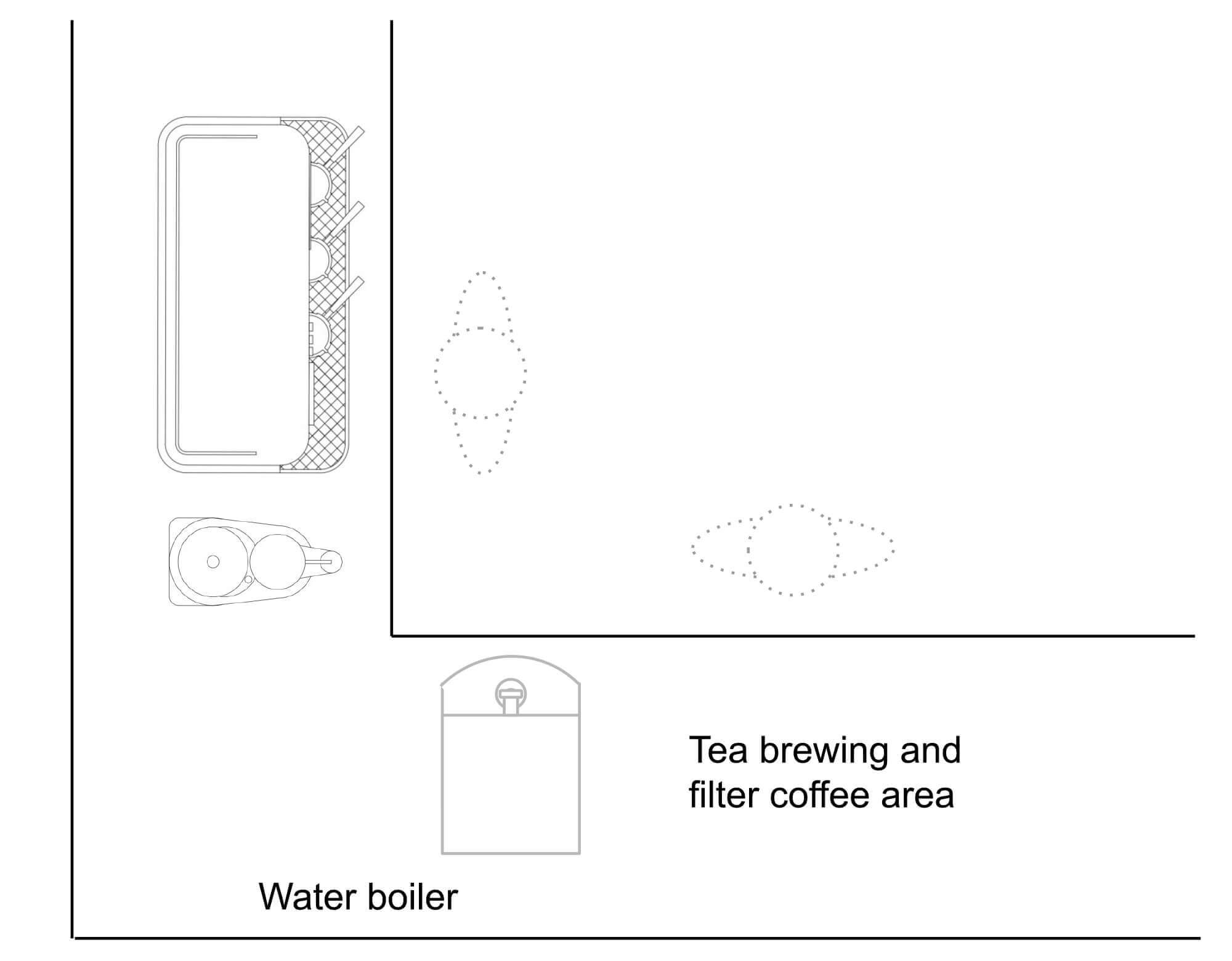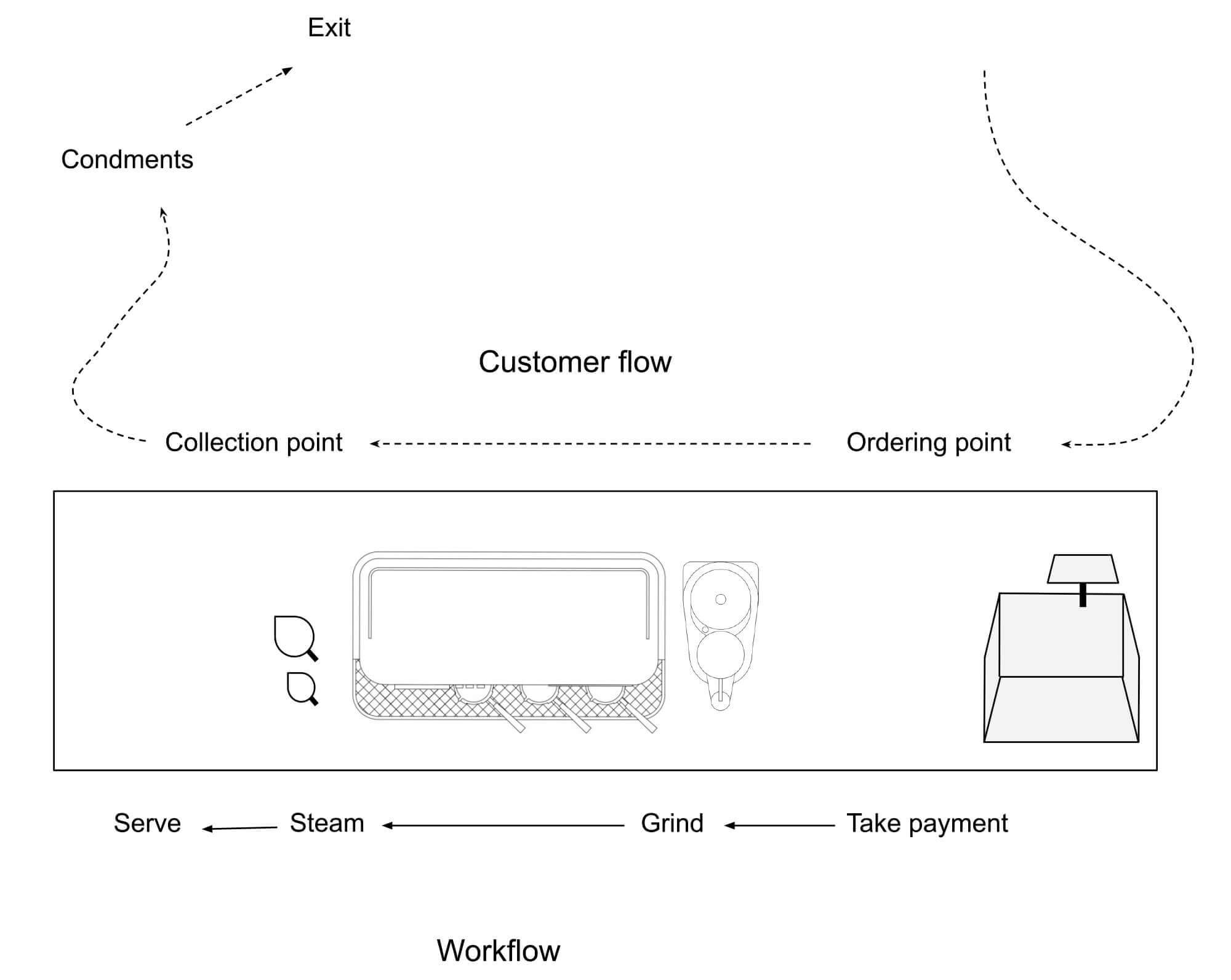Creating the interior design is one of the most exciting, but also one of the most stressful parts of setting up a new coffee shop. A beautiful and unique space will draw customers in and encourage them to spend time with you. At the same time, an effective layout can boost sales and make service more efficient. Get the layout wrong, however, and it can be expensive or even impossible to fix once the cafe has opened.
The interior design is the visual representation of what your business stands for. It plays a huge part in setting the ambiance in your cafe, and in determining the kind of customers that you attract. But the visual appearance is only one part of the story. A cafe design doesn’t only have to look good, but it has to work hard as well.
This guide is all about the functional side of cafe design. Aesthetic decisions are highly personal, so we leave those to you and your designer. Instead, in this guide, we will show you how to lay out your cafe to maximize sales and create the most efficient workflow.
Knowing what makes an effective, practical layout will help you create a brief for your designer or architect. Working with these guidelines, you can make sure that your cafe will not only be beautiful, but functional as well.
What makes a good layout?
To design an effective layout, it’s important to start by defining what you need the layout to achieve. Different cafes have different needs — but there are some principles that apply to any coffee business.
A good layout is welcoming. The design of the space should draw customers in and make them feel immediately at home. Make sure there are no barriers to entry, such as heavy doors or narrow walkways. Think about how disabled customers, or parents with small children, can enter the space.
A good layout is intuitive. When a customer enters, it should be immediately obvious where they should order, and how they get their drinks. If a customer enters your cafe and doesn’t know where to go, it makes for an anxious and uncomfortable experience.
An effective design makes it clear how everything works without needing to use any signs. For example, a fast service cafe could draw people straight to the register by leaving a clear path from the front door. A cafe with table service, on the other hand, might choose to direct customers into a waiting area until they can be assigned to a table.
A good layout is efficient. Most coffee businesses aim to serve customers quickly. After all, a coffee shop has to sell a lot of drinks to break even. An effective layout helps baristas work faster, and makes it easy for customers to order, collect their drinks, and leave.
A good layout is ergonomic. Working as a barista is tiring, and workplace injuries are distressingly common. Smart design can lessen the strain on your team and reduce the risk of accidents.
Behind the bar
The back of the house should be the starting point for any functional design because it dictates how the whole cafe operates. The layout of the rest of the space follows on from that.
The first step is to plan out the movements that your staff have to make for each task. Where do they have to go to get supplies? Where do they drop dirty dishes?
For each task, try and find an arrangement that minimizes the number of steps your staff have to take, and the number of times they may have to pass each other.

A bad layout. Servers with dirty dishes have to pass servers delivering food, and then have to squeeze past the baristas to reach the dishwashing area.

A better layout. Servers with dirty dishes have less far to walk and do not cross paths with other staff.
In the same way, try to reduce the amount your staff has to move to make any single item on the menu. Arrange your equipment and supplies so that the barista can complete their task without taking a single step.
At the same time, try to minimize the amount of reaching or bending down your staff have to do to perform each task. The most they should need to do is turn around.
For example, if you plan to serve a lot of tea, you might need a dedicated tea station with tea brewers, scales, jars of tea, and a supply of hot water all in one place. If the barista has to walk to the other end of the bar to fetch hot water, it slows the process down and could be dangerous.

In this setup, both the barista at the espresso machine and the barista brewing tea can reach the water boiler from their workstation.
If there are zero steps involved in making each menu item, it is safer and more efficient. The work will be less tiring for your staff, and staff will need to cross paths less often.
Follow the flow
The next step is to plan how customers should move through your bar. In the ideal layout, your workflow should mirror customer flow.
How customers move through the cafe is just as important as how your staff do. Try to design the path your customers follow so that they don’t have to cross paths, and there are no bottlenecks.
For example, keep the area where you serve drinks separate from the register where you take orders. That way, customers waiting for a drink are not blocking the next customer from placing their order.
Plan your workflow on the bar to follow the path that the customer takes through the cafe. For example, in many cafes the grinder is positioned next to the register, so the barista can start making coffee as soon as the customer orders. Once the customer has finished ordering, they move to the collection point, allowing more customers to enter. The barista finishes the drink at the collection point and immediately serves it to the customer.

A layout like this has several advantages:
- Customers do not cross paths, which is much more comfortable for them;
- Customers can watch the process of their drink being made;
- Baristas can work on several orders at the same time, which is much more efficient;
- New customers can place orders even if there are several customers already waiting for coffees;
- In quiet periods, one barista can manage the whole process without ever stepping away from the customer.
The Customer Experience
The layout of the bar has a big impact on how the customer interacts with your cafe. A smart layout makes it easy for them to spend money with you.
Every step that the customer takes through your space is an opportunity to improve their experience. When planning a layout, try to walk through the space as if you were a customer, and see it through their eyes.
The first step is perhaps the most crucial — the layout can help welcome them into the space and make it clear where they need to go. For example, positioning the register close to the door will make it easy for your staff to greet new customers as soon as they enter.
When customers enter your cafe, they should be able to decide what they want to order long before they reach the register. The menu should be clear and readable, and cakes and pastries should be on prominent display. On the other hand, if your customers can’t see what’s on offer until they reach the register, they will hold up the queue while they decide, and they will feel rushed and stressed when ordering.
The area where customers queue in is also a good place to position retail items. Customers can browse while they queue, which will increase sales, but also keeps them engaged while they wait.
The espresso machine and other major equipment should be positioned facing the customer whenever possible. That way, baristas can engage customers while they work, and customers can watch their drinks being prepared. Customers are much more likely to try new things if they can see them being made.
Finally, positioning the self-service area with sugar, lids, and so on a short distance away from the service area will keep customers moving, allowing you to serve more people.
With clear paths for both your staff and your customers to follow, your cafe can operate more efficiently. A good layout can make every step count.
Looking for help with designing and fitting out your cafe?
Contact our experts for a free consultation, to help you create a layout that works for your business.
REQUEST FREE CONSULTATION
